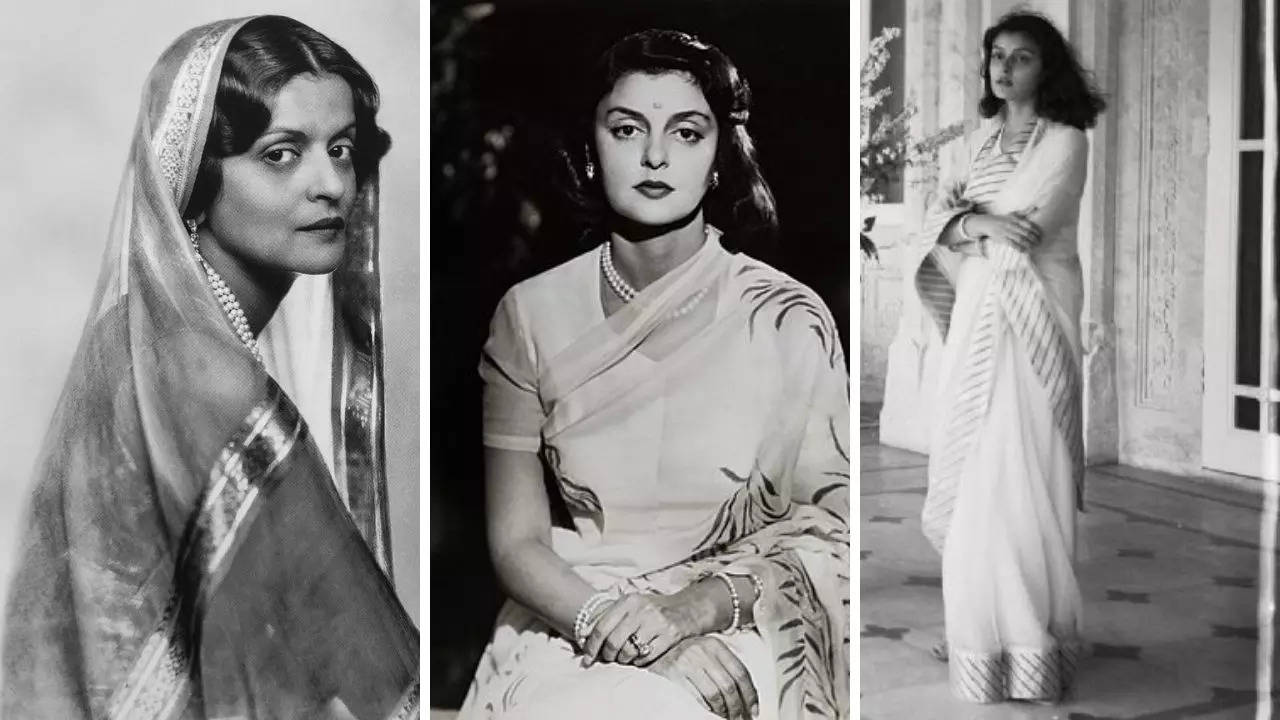
Delicate, light, and dreamy — chiffon sarees have a special place in fashion history. Maharani Gayatri Devi of Jaipur (1919-2009) loved these elegant sarees so much that they became her signature look. Even today, chiffon sarees are often linked to her timeless style. But the real story of how chiffon came to India starts with her mother, Maharani Indira Devi of Cooch Behar (1892-1968). On a trip to France, Indira Devi visited the city of Lyon, known for its silk production, and discovered chiffon. She instantly fell in love with the fabric and decided it would be perfect for her sarees. Instead of sticking to the traditional six-yard saree, she ordered a nine-yard version, making a bold style statement that changed Indian fashion forever.
Both Indira Devi and Gayatri Devi would order chiffon from Lyon, but the finishing touches — like embroidery, borders or embellishments — were done by artisans or kaarigars in Kolkata, giving a desi twist to the exotic fabric from France.
Lyon’s chiffon was usually in soft pastel shades, often featuring subtle patterns or prints. Back then, chiffon was made entirely from silk, which made it an expensive luxury, worn mostly by the elite. It was more than just a fabric — it was a status symbol.
For nearly 500 years, Lyon was the centre of Europe’s silk industry. "In 1466, King Louis XI established Lyon as a hub for silk production, employing skilled Italian weavers from Calabria," writes Danielle Olavario for Euro News. "By the 16th century, Lyon was the silk capital of Europe, and by the 17th century, more than 14,000 looms were operating in the city, supporting a third of its population."
In the 19th century, with social changes and the rise of the middle class, silk became more popular as the bourgeoisie sought to emulate the nobility. As the Musée Soieries Brochier notes, this was when Lyon’s silk industry reached its peak, becoming France’s leading export and outshining other European silk markets.

